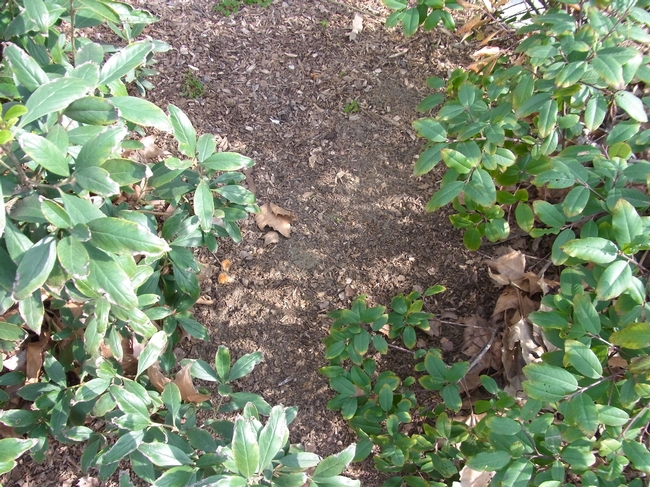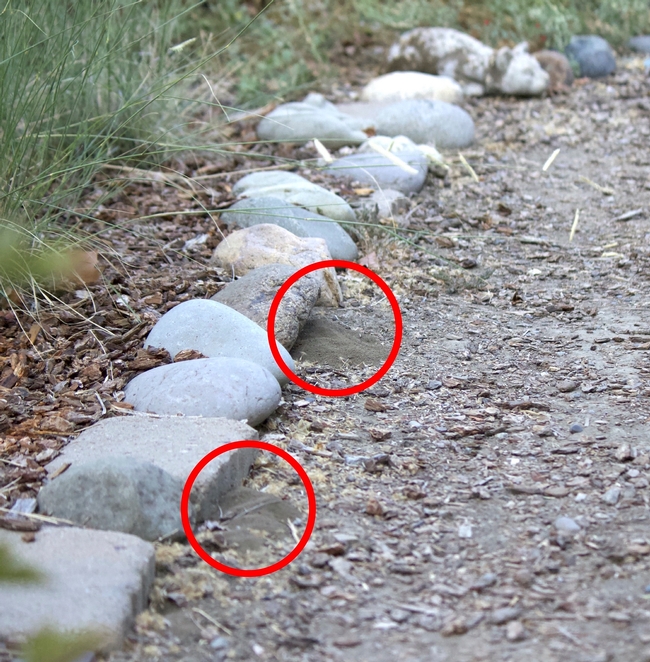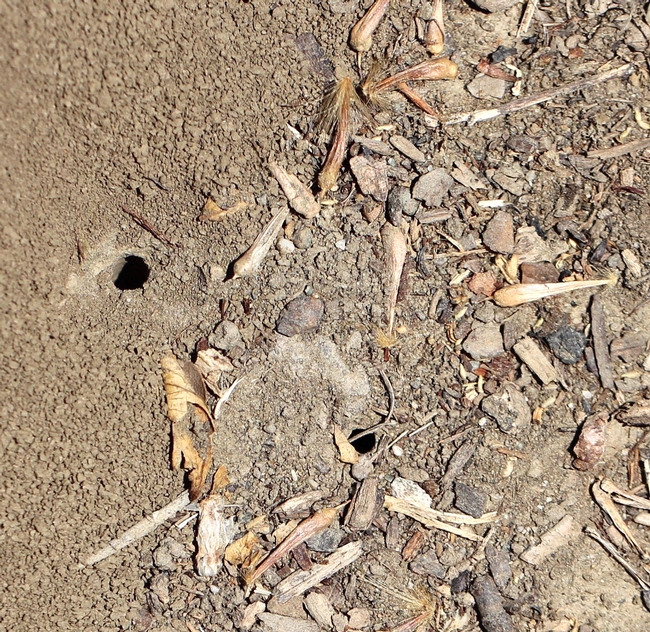
The only scientific study of the role of mulch in gardens was done by a group at UC Santa Cruz as part of a larger study looking at various garden factors and their influence on bee populations. They found a negative correlation between the area of a garden with mulch cover and the number of bee species (Quistberg et al., Environmental Entomology. 2016, 45(3):592-601).
Of course this doesn't mean you shouldn't use mulch, given its benefits. Here are tips on using mulch while also conserving bee habitat:
- The bare area does not need to be large or visible. For example, a bare strip can be left along the side or back of a garage or between larger shrubs that will hide the area. It's also a good idea to not place mulch directly against tree trunks, which will also leave some bare soil.


- In most of California, ground-nesting bees will be finished their seasonal activity by the end of October. If an area needs to be mulched, delay until then. The new bees should be able to emerge from underneath the mulch the following spring.
- Soil doesn't need to be amended in any way to help bees nest. These bees are native to the area and are adapted to excavate nests in hard, crusty summer soil.
- Some bee species nest along fence rows or other straight lines. They can also prefer to create nests in the shade of stones such as these along a path border.


Some other mulch tips:
- If you see wasps in your mulch pile, it has probably been sitting a while and is starting to ferment, creating alcohol and sugars. This happens due to lack of oxygen. Turn the mulch pile and let it sit a few days before using it.
- Avoid colored mulch. The effect of the dyes in these products on bees in unknown.
- Do not use cocoa bark mulch if you have dogs. It can be poisonous.
- Don't overdo it. An inch or two is plenty.